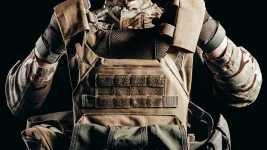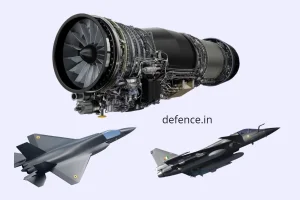India's ambitious plan to develop an indigenous Twin Engine Deck-Based Fighter (TEDBF) is encountering serious delays, casting significant doubt on its initial goal of a first flight by 2026.
The program, crucial for the Indian Navy's aircraft carrier capabilities, is bogged down by stalled design reviews and uncertainty over funding, potentially forcing the Navy to rely on its aging fleet of MiG-29K jets well into the next decade.
The TEDBF is envisioned as a cutting-edge, 5-minus generation fighter jet designed to operate from India's aircraft carriers, INS Vikrant and the future INS Vishal.
Developed by the Aeronautical Development Agency (ADA) and Hindustan Aeronautics Limited (HAL), the 26-tonne aircraft is intended to be the future backbone of naval aviation. However, the project's progress has been slower than anticipated.
As of mid-2025, the program has yet to clear its Preliminary Design Review (PDR), a fundamental step that freezes the aircraft's basic design. The subsequent Critical Design Review (CDR), which finalises the detailed specifications for manufacturing prototypes, remains a distant milestone.
Defence analysts project that completing these essential reviews and securing formal approval from the Cabinet Committee on Security (CCS) could take another three to four years, pushing the start of prototype construction to 2028 or later.
This revised timeline poses a direct challenge to the Indian Navy's plan to retire its fleet of Russian-made MiG-29K fighters by 2035.
The MiG-29K, inducted in 2010, has a history of operational and reliability problems. A 2016 report by the Comptroller and Auditor General (CAG) highlighted serious issues with the aircraft's engines, airframe, and fly-by-wire system.
The MiG-29K fleet's serviceability has been historically low, and a number of accidents have raised safety concerns, creating risks for pilots and impacting the Navy's combat readiness.
The development of a carrier-based fighter like the TEDBF presents unique engineering complexities not faced by its land-based counterpart, the Air Force's Advanced Medium Combat Aircraft (AMCA).
The TEDBF must be built to endure the immense physical stress of catapult-assisted take-offs and arrested landings on a moving carrier deck. Furthermore, its design requires foldable wings and compact dimensions for efficient storage in a ship's hangar.
Creating an entirely new aircraft with these specifications, rather than modifying an existing one, adds layers of complexity and requires exhaustive testing.
The ambition to create a "5-minus generation" platform—incorporating advanced avionics, partial stealth features, and the ability to cruise at supersonic speeds without afterburners—has also contributed to the program's high projected cost, estimated at ₹14,000 crore.
This figure has reportedly made the Ministry of Defence hesitant to grant full financial approval without a more concrete development schedule and greater confidence in the project's execution. This lack of firm financial commitment has created a cycle of uncertainty, further slowing progress.
These delays have serious strategic implications for India's maritime power.
As nations in the Indo-Pacific region continue to modernise their naval forces, a capable and reliable carrier air wing is essential for projecting influence and protecting national interests. An extended reliance on the troubled MiG-29K fleet could leave the Indian Navy at a disadvantage.
To bring the TEDBF program back on schedule, experts suggest that the Ministry of Defence must streamline the approval process and prioritise funding to accelerate the design and prototyping phases.
Expediting the PDR and CDR stages by applying lessons learned from the Tejas fighter program is also seen as critical.
While interim measures like further upgrading the existing MiG-29K fleet or seeking other foreign aircraft are possible, they are considered stopgap solutions that cannot replace the strategic value of a domestically produced, modern deck-based fighter.


